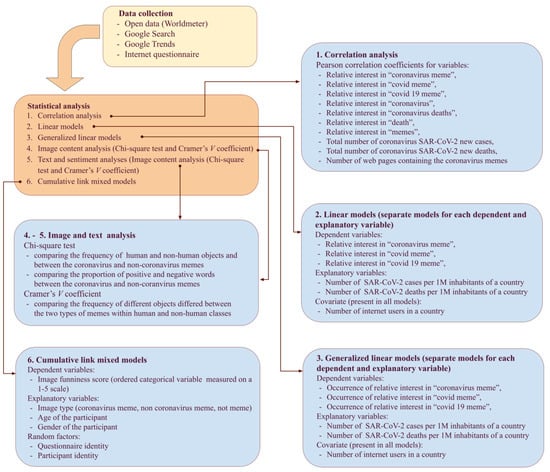What does it take to make a software development partnership successful? How critical is effective communication in these partnerships? Could robust communication enhance the performance and output of the project? These intriguing questions are essential to deeply understand the role and impact of communication in software development partnerships.
According to a study published in the Harvard Business Review, miscommunication in software development teams and partnerships has been identified as a significant challenge in the industry, affecting productivity drastically (HBR, 2021). Additionally, as shown in another recent study by the Project Management Institute, ineffective communication has been seen as a critical factor contributing to the failure of at least 56% of projects (PMI, 2020). Acknowledging the urgency of addressing this escalating issue within the United States, it becomes evident that adopting communicative improvements and strategies is a necessary step towards fostering future successful partnerships and projects in software development.
In this article, you will learn about the importance of seamless communication in software development partnerships. We will delve into the practical aspects of effective communication, explore the various challenges hindering effective communication, and present proposed solutions to these problems. We will provide actionable strategies to bolster communication within your team, ensuring better productivity and successful completion of projects.
Furthermore, we will offer real-life examples of failed and successful software development partnerships. Through these case studies, we highlight the consequences of poor communication and the positive outcomes that arise from effective communication in these partnerships. Ultimately, this article will strive to equip you with the indispensable tools necessary to excel in software development partnerships.

Definitions Essential to Understand Software Development Partnerships
Software Development: This is the detailed programming and creation of a software application which has a specific purpose. In simple terms, it’s like constructing a digital product out of lines of code.
Partnerships: Here, it refers to a collaborative relationship between two organizations or individuals like a business collaboration. They work together towards achieving common objectives.
Communication: This is the act of exchanging information, feedback or ideas between two or more people. In this context, it refers to the regular and effective interactions between software developers and their partners.
Successful Software Development Partnerships: This means beneficial, productive, and long-lasting collaborative relationships in the field of software development which are based on effective communication.
Unraveling the Hidden Power of Communication in Transforming Software Development Partnerships
The Role of Effective Communication in Finding Common Ground
Coming together in alliances often implies a common purpose. However, achieving this symbiosis in software development partnerships depends heavily on effective communication. Software development processes are complex, involving numerous technical aspects, such as algorithm design, system integration, and debugging, among many others. Therefore, it becomes essential for partners to communicate their respective roles, responsibilities, and contributions to be made to the project. By discussing each party’s expertise and expectations, partnerships can effectively strategize and align their goals.
Open and clear communication helps teams avoid misunderstandings, ensuring smooth project progression. It enables partners to voice their concerns and ideas more freely and honestly. They can openly discuss potential issues, identify risks, and work together to devise effective mitigation strategies. Furthermore, it intensifies trust and respect among team members, which are key to fostering a truly collaborative environment.
Deploying Communication as the Glue for Seamless Integration
Integration is a key aspect of software development. Lack of proper communication can lead to issues during this phase, potentially derailing the entire project. Partners must speak the same ‘development language’ or, at least, understand the nuances of each other’s language in order to seamlessly integrate different parts of a software project.
One way to maximize the benefits of communication in software development partnerships is through the use of comprehensive and efficient communication channels. It could be through regular meetings, frequent code reviews or collaboration using modern project management tools. These methods help in ensuring a continuous exchange of ideas which bolyses the project development.
- Regular meetings are crucial as they keep everyone on the same page, foster discussions and brainstorming, and offer a platform for issue resolution and feedback.
- Code reviews are a valuable platform for conversation. These reviews act as learning sessions where team members understand each other’s code and share inputs to improve them. They also prevent potential problems that might become significant issues down the line.
- Project management tools foster smooth communication by ensuring everyone is on the same page and all tasks are tracked and completed in a timely manner.
In conclusion, successful software development partnerships rely heavily on strong communication. By fostering an open and honest dialogue, partners can better align their goals, understand their roles and responsibilities, and work more effectively towards the common objective. In the intricacies of code and programming, effective communication is indeed the binding thread that keeps partners seamlessly connected and the project moving towards successful completion.
Merging Communication and Software Development: A Disruptive Strategy for Successful Partnerships
Are You Maximising Your Partnership Potential?
In the evolving landscape of the software industry, fostering effective software development partnerships plays a key role in achieving organisational objectives. Attention should not only be focused on technical aspects but high-value aspects such as communication channels as well. Robust communication mechanisms function as the lifeblood of high-performing partnerships, bolstering collaboration and alignment through every step of the development process. That the best partnership outcomes arise from a well-orchestrated blend of innovative ideas, expertise, and technology is beyond dispute. Nevertheless, the question remains – is your partnership truly leveraging the power of high-level communication to reach its peak performance?
Underestimating the Role of Communication: A Revealing Dilemma
Alas, many partnerships unwittingly diminish their effectiveness by undervaluing the role of communication. Awash in a sea of code, algorithms, and development models, it’s easy to overlook the salient importance of open, accurate and timely information exchanges. When missed or misinterpreted messages lead to errors, rework, and frustration, productivity drops, deadlines are missed, and project goals falter. This common problem may seem trivial amidst complex software architecture and design challenges, however, it’s an essential issue that needs upfront attention to ensure a successful and harmonious partnership.
Proven Strategies for Excelling in Partnership Communication
Thankfully, numerous successful software development partnerships provide a wealth of good practices that can be replicated. Setting up a clear communication protocol from the outset is a widely shared practice. This means establishing norms for frequency and mode of communication, deciding who is to communicate with whom, and agreeing on what kind of information should be shared. Regular, scheduled updates and feedback sessions help keep everyone on the same page. Taking advantage of modern communication tools, such as collaboration platforms and instant messaging, also aids in ensuring that information and ideas flow freely, fostering a culture of transparency and mutual understanding. Lastly, encouraging constructive feedback promotes a learning environment, leading to constant process optimization and innovation.
The Blazing Effect of Meticulous Communication on the Success Rate of Software Development Partnerships
The Role of Clear and Honest Interaction
Think about this – what is the primary component that propels the process of software development towards success? It is effective and efficient communication, without a doubt. Communication is not just about discussing what needs to be developed; it also entails a deeper understanding of expectations, desires, and strategies. Communication can break down the boundaries of complexity in software development, fostering more seamless relationships and reducing system failures. It ensures everyone involved in the development process shares a common vision about the final product and its usage. High-quality interaction also enables quicker identification and rectification of problems, leading to more industry-dominant partnerships.
Recognizing the Hurdle in the Pathway
In a software development project, communication that misses the mark can often lead to ambiguities and gaps in understanding. These can then manifest as delays, cost escalations, and dissatisfied stakeholders. Moreover, poor communication can also account for reduced quality of output, hindering the project’s scalability and profitability. Absence of clear-cut communication creates a vacuum where queries remain unresolved, and pertinent information goes unshared — leading to misunderstandings about the project’s requirements, deadlines, and overall goal. A software development project is a well-oiled machine, and when communication – the lube – is inadequate, it’s the partnership that suffers.
Adopting Best Practices in Communication
Several industry front-runners owe their standing to their commitment to effective communication. Take, for instance, the teams at Google – one of the tech-world giants. In order to avoid complication due to size and scale, Google vigilantly practices open lines of communication among teams and encourages proactive feedback sharing. Netflix, another formidable player in the industry, attributes much of its meteoric rise to ensuring that openness, clarity, and regularity of communication are central to their culture. The team members maintain transparent channels of communication with each other, regularly conduct meaningful discussions, and their leaders set clear expectations right from the start. These examples demonstrate how high-profile entities keep their teams aligned towards a shared ambition through meaningful and reliable communication. It is safe to say that the software industry’s true titans have cracked the code – establishing excellent reciprocal communication as the foundation for successful development partnerships.
Conclusion
Can you truly imagine a successful software development partnership without clear and effective communication lines? The process of creating a software product isn’t one to be navigated alone. It requires a substantial amount of interaction, understanding, teamwork, and unequivocal clarity. This is especially crucial between customers and developers, where every detail matters. Hence, communication plays an integral role in determining the software design, its features, and the overall project outcome. Indeed, communication is what fuels the engine that drives successful partnerships in software development.
We invite you to stay connected with us and never miss a beat. Following our blog ensures that you stay up-to-date with relevant information, extends your knowledge base, and prepares you better for the dynamic world of software development. Our platform provides a unique opportunity to learn as well as contribute to the growing community. Reading our blog regularly means you have access to relevant and timely resources, newer trends, and industry best practices. Plus, you get to gain insights into expert perspectives on various matters regarding software development.
Eager for more enriching content? Just wait till you see what we have in store for you! Our pipeline is teeming with exciting and educational articles that bring comprehensive insights into diverse topics related to software development. Our up and coming posts will delve deeper into various elements such as programming language selection, UI/UX design considerations, version control systems, and debugging techniques, amongst others. Stay tuned for these new releases, as each one promises to impart a wealth of knowledge and practical tips to enhance your software development partnerships further. Remember, in the world of software development, learning never stops. Let’s embark on this journey of continued improvement together for a brighter and better future in the software industry.
F.A.Q.
1. Why is communication crucial in successful software development partnerships?
Effective communication is key in software development partnerships as it ensures all parties are on the same page, preventing misunderstandings and enabling coordinated work. It improves clarity, encourages problem-solving and allows for collaborative ideation, leading to higher productivity and success rates.
2. What can happen in the absence of good communication between software development partners?
Without good communication, the risk of misinterpretation and misalignment increases, leading to inefficiencies, misunderstandings, and project failure. It can also result in strained relations between partners, affecting the overall project atmosphere and potentially causing project delays.
3. How can software development organizations enhance their communication?
Techniques to enhance communication include fostering an open and inclusive culture, utilizing advanced communication tools and technologies, and arranging regular meetings or check-ins. Training employees in communication skills and adopting a proactive approach to addressing issues can also be beneficial.
4. What role do communication tools play in software development projects?
Communication tools form an essential part of software development projects as they facilitate seamless interaction and collaboration between team members. These tools can aid in workflow management, real-time discussions, file sharing, and feedback implementation, ultimately increasing efficiency and productivity.
5. How does good communication improve the outcome of a software development project?
Good communication promotes understanding and alignment within the project team, enabling accurate execution of tasks and preventing confusion. Plus, it fosters a culture of supporting and learning, where every team member’s input is valued, leading to better problem-solving, innovation, and overall project success.


